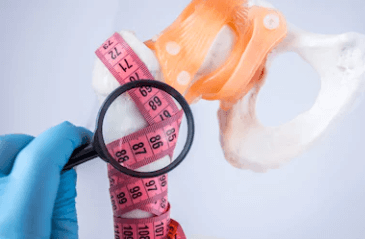Often, exercises listed as best for improving bone density don’t work for those who need them most. Generally labeled as “weight-bearing,” the exercises may require time or resources not available to many. Or they may be simply too intense. This leaves walking which is good but may not offer support for the entire body.
Ultimately, finding the best exercise for bone density is a personal decision. Fortunately, regardless of individual capability, personal interests and available resources, there is an exercise that meets every possible personal need. Bone density can be improved through both high-intensity and low-intensity workouts.
This article will act as a guide to help find the best exercise to improve bone density. It will review:
- Factors that make an exercise good for bone health;
- Time needed for the exercise;
- Traditional exercises recommended to promote bone density;
- Alternative exercises; and,
- Ways to enhance the exercise for maximum personal benefit.
3 Factors that Make an Exercise Good for Bone Health
In 2009, University of Michigan researchers identified three factors that have the biggest positive effect on bone health:[1]
- Strain rate. This refers to exercises featuring repetitive high-impact, weight-bearing activities that create muscle strain such as jumping.
- Strain magnitude. These exercises put a lot of strain on the muscle as you would find in weightlifting.
- Strain frequency. Repetitive, low-impact exercise like running offers lower muscle effort but provides constant impact through the exercise motions.
An exercise does not need to have all three to be good for bone density. One is enough. For example, research shows jumping programs do help bone density. A 16-week study of high-impact jumping in pre-menopausal women ages 25-50 reported improved bone density in the hip.[2] Benefits were also observed in women participating in jump-based exercises performed in water.[3]
Measuring any exercise against these three elements can help identify if it will benefit bone density. It also explains why exercises like swimming and cycling do not benefit or support bone density. They do not put strain on the muscles or bone.
Traditional Exercises to Improve Bone Density
The National Institutes of Health recommend exercises that “force you to work against gravity.”[4] These exercises include:
- Weight training
- Hiking
- Jogging
- Stair climbing
- Dancing
- Walking
When devising a good exercise, it’s important to get creative. Each of these exercises can and should be adapted for personal preference. Jogging can become running. Hiking can become backpacking. Weight training can become a short HIIT routine.
Alternative Exercises to Improve Bone Density
Some exercises are excellent for bone mineral density when done on a consistent, long-term basis. Tai Chi for example has shown limited short-term results but much more pronounced positive effects when done for 8 months or a year.[5],[6] Tai Chi offers additional benefits in that research shows it helps weight loss and weight maintenance as well as maintaining normal blood sugar.[7]
Like Tai Chi, yoga is another exercise which research suggests would provide long-term benefits as well. A recent study did not observe changes in bone density over a 12-week class but did note osteocalcin levels increased by the end of the study indicating bone growth had been stimulated, but not completed. Researchers suggested the benefits would be observed if the practice were continued on a regular basis.[8]
There are different forms of Yoga and Tai Chi and each may offer different levels of benefits.
How Long Should the Exercise Be?
The Surgeon General recommends 30 minutes of exercise daily.[9] For bone density, researchers have found benefits can be achieved in as little as two minutes a day, for the more intense exercises.[10] The reality is, exercise should be done both for the health benefits and for fun, which means the time of it should optimize both.
Enhance Exercise with Appropriate Nutrition
Exercise may encourage bone density but for the best results, the body needs to have all the nutrients in place to build bone. This means a diet full of calcium and vitamin D which are essential for bone health. It also means attention to other minerals like magnesium which is needed to support both vitamin D function and calcium balance in the body.
A diet full of natural foods, rather than processed foods, is best. If you have questions on the best diet for you, talk to your healthcare provider. A nutritionist can also help.
References:
- Manske SL, Lorincz CR, Zernicke RF. Bone Health: Part 2, Physical Activity. Sports Health. 2009;1(4):341-346. doi:10.1177/1941738109338823.
- Tucker LA, et al. Effect of two jumping programs on hip bone mineral density in premenopausal women: a randomized controlled trial. Am J Health Promot. 2015 Jan-Feb;29(3):158-64. doi: 10.4278/ajhp.130430-QUAN-200.
- Aboarrage Junior AM, et al. A high-intensity jump-based aquatic exercise program improves bone mineral density and functional fitness in postmenopausal women. Rejuvenation Res. 2018 Jun 11. doi: 10.1089/rej.2018.2069. [Epub ahead of print]
- https://www.bones.nih.gov/health-info/bone/bone-health/exercise/exercise-your-bone-health
- Song QH, et al. Effect of Tai-chi exercise on lower limb muscle strength, bone mineral density and balance function of elderly women. Int J Clin Exp Med. 2014 Jun 15;7(6):1569-76. eCollection 2014.
- Chow TH, et al. The effect of Chinese martial arts Tai Chi Chuan on prevention of osteoporosis: A systematic review. J Orthop Translat. 2017 Jun 26;12:74-84. doi: 10.1016/j.jot.2017.06.001. eCollection 2018 Jan.
- Hui SS, et al. Effects of Tai Chi and Walking Exercises on Weight Loss, Metabolic Syndrome Parameters, and Bone Mineral Density: A Cluster Randomized Controlled Trial. Evid Based Complement Alternat Med. 2015;2015:976123. doi: 10.1155/2015/976123. Epub 2015 Oct 12.
- STONE TM, WINGO JE, YOUNG JC, NAVALTA JW. An Evaluation of Select Physical Activity Exercise Classes on Bone Metabolism. International Journal of Exercise Science. 2018;11(2):452-461.
- https://www.bones.nih.gov/health-info/bone/bone-health/exercise/exercise-your-bone-health
- Manske SL, Lorincz CR, Zernicke RF. Bone Health: Part 2, Physical Activity. Sports Health. 2009;1(4):341-346. doi:10.1177/1941738109338823.

